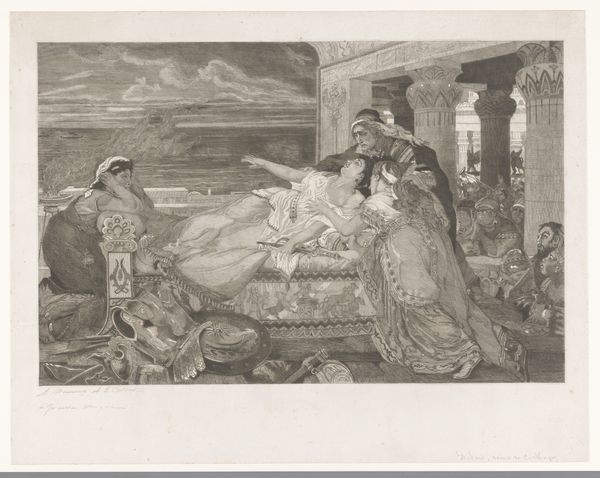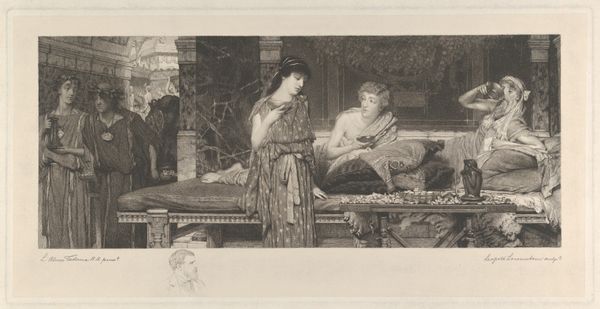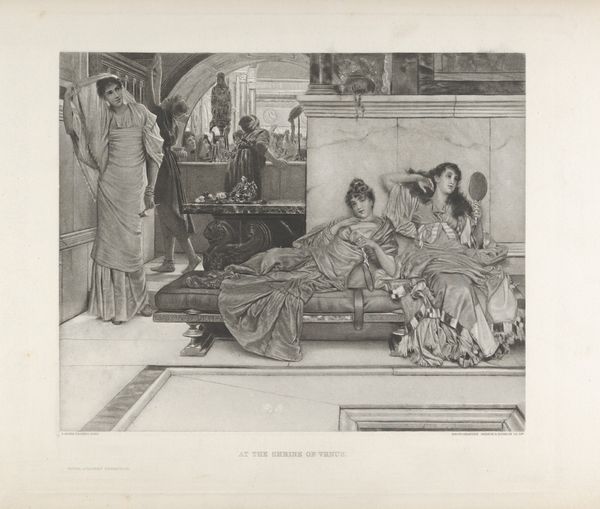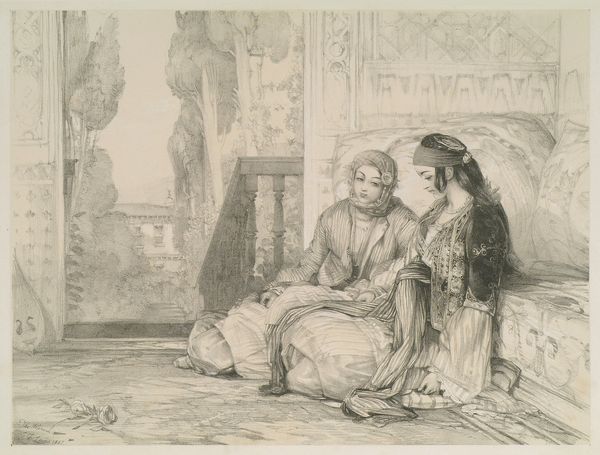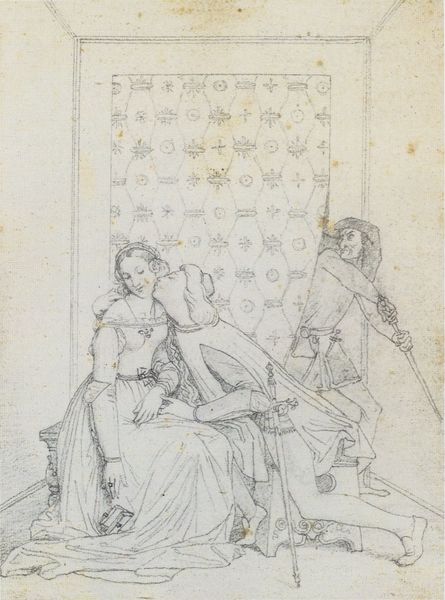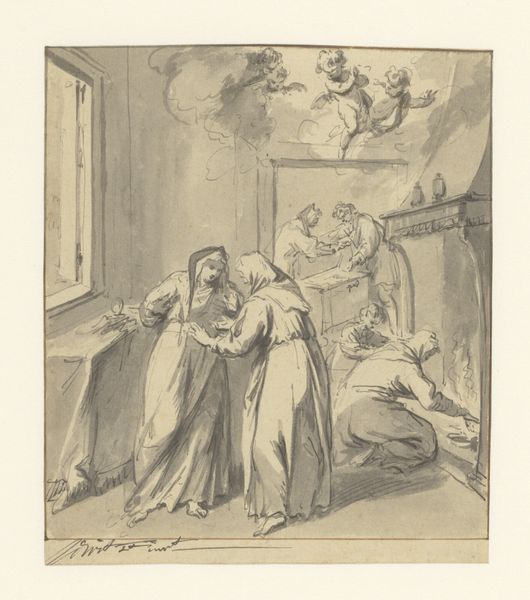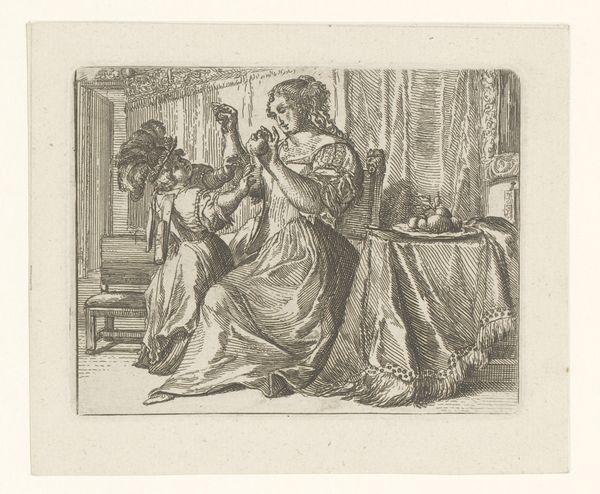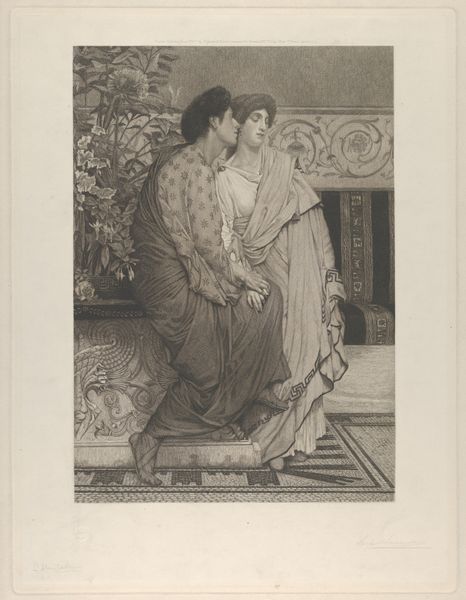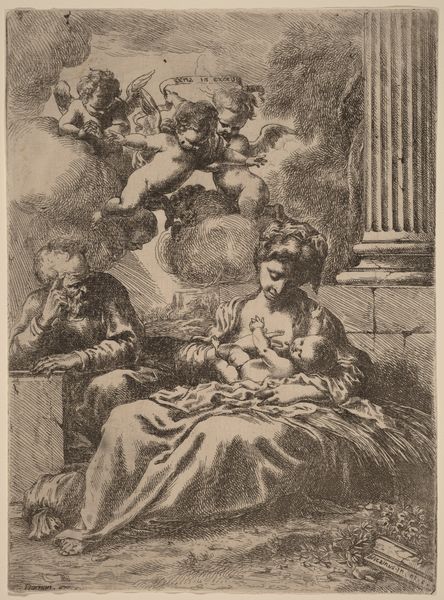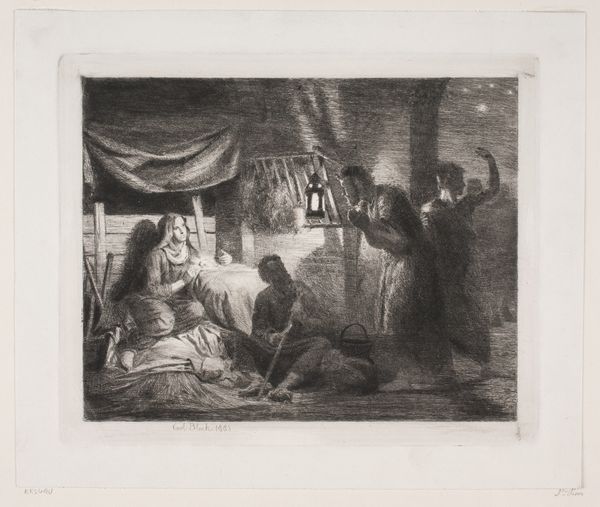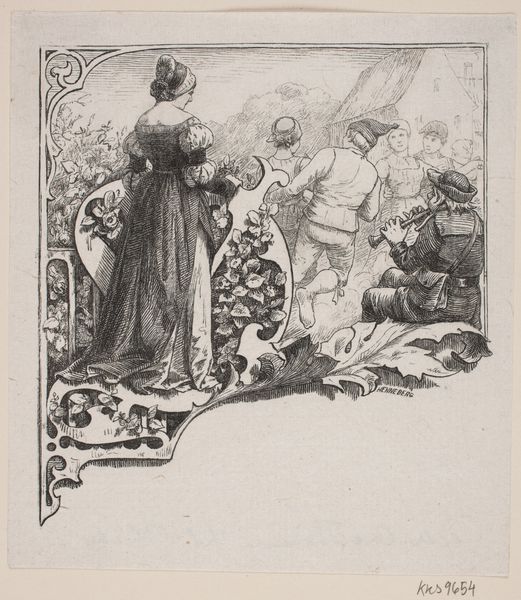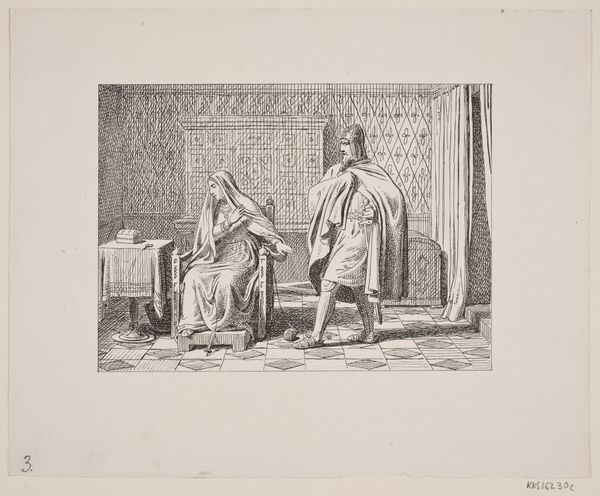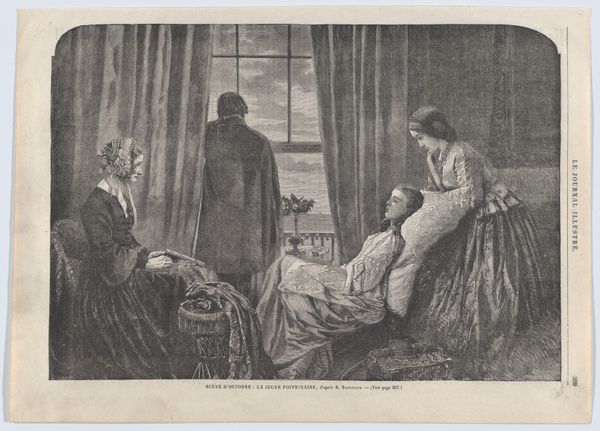
drawing, print
#
pencil drawn
#
drawing
#
light pencil work
# print
#
pencil sketch
#
personal sketchbook
#
pencil drawing
#
pen-ink sketch
#
traditional art medium
#
men
#
portrait drawing
#
pencil work
#
pencil art
Dimensions: Sheet: 6 1/4 × 7 7/8 in. (15.9 × 20 cm)
Copyright: Public Domain
Curator: Welcome. We’re looking at "The Captive" by H. Harrison, originally published in the Illustrated London News in 1848. It's currently held at the Metropolitan Museum of Art. What strikes you first about this print? Editor: A palpable sense of confinement and melancholic repose. The monochromatic rendering, typical of prints, amplifies this quiet sorrow. Curator: Observe the contrast between the delicate lines defining the woman's features and the bolder, more assertive strokes delineating the figure tending to her. How does that strike you formally? Editor: This deliberate divergence invites questions regarding agency, race, and power relations, especially when viewed within the history of Orientalism and colonialism. Curator: Precisely. The artist employs hatching and cross-hatching to sculpt form, creating volume and depth that draw the eye into the interior space. Note, too, the arrangement of objects around the woman - a mirror, trinkets... do they serve to console, distract, or simply reflect her gilded cage? Editor: I’d argue that these objects are staged. This is a performance of luxury designed to distract from, and perhaps justify, the sitter's captivity. This image normalizes the dehumanization of some so that others can maintain status. Curator: While I see the potential for that interpretation, let’s consider the formal elegance of the composition first. The use of light and shadow…the interplay of textures—all these elements coalesce into a unified aesthetic experience, irrespective of its historical context. Editor: Can we really detach this image from the imperial gaze of 1848, when it was published, normalizing specific power dynamics and further cementing an ideology? That formal elegance becomes deeply troubling when one considers whose beauty is being elevated, and at what cost. Curator: Well, this piece demonstrates how artistic choices contribute to visual storytelling, inviting contemplation beyond historical interpretations. Editor: For me, the potency of "The Captive" arises from its entanglement with colonial history, urging us to reflect on power imbalances, representation, and resistance within visual culture.
Comments
No comments
Be the first to comment and join the conversation on the ultimate creative platform.
